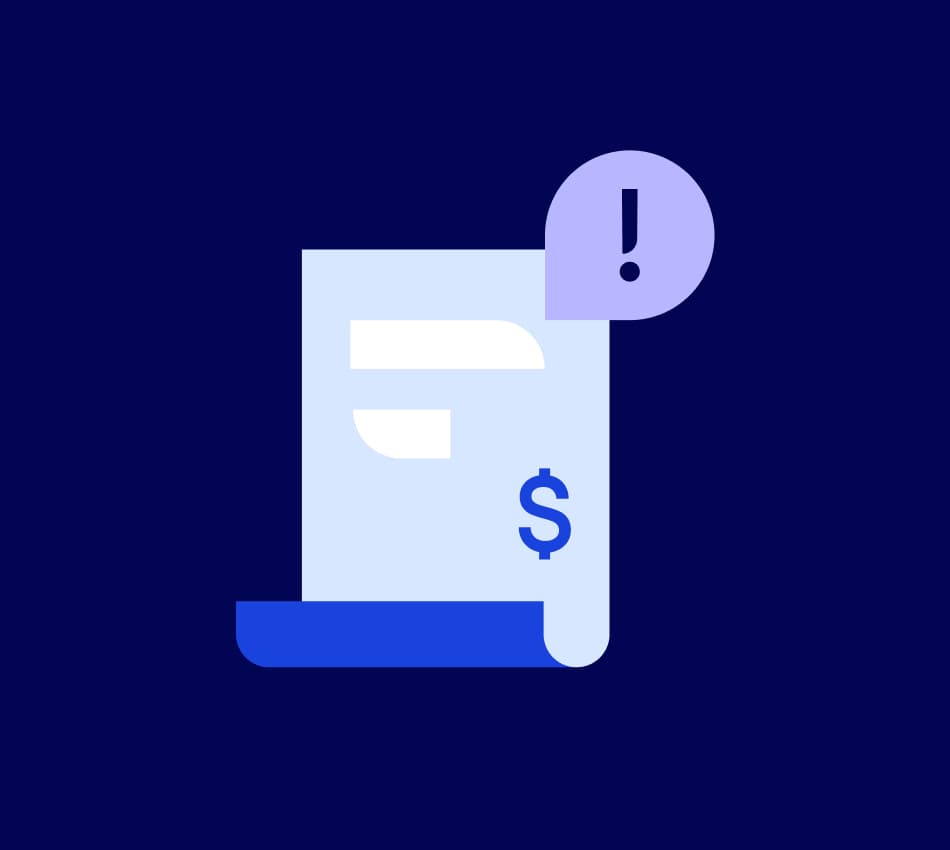Did you know that one in ten invoices are never paid or written off as debt?
The consequences of payment delays and overdue invoices go beyond just affecting your profits––they can also disrupt your business’ cash flow and create a chain reaction that makes it challenging to fulfill financial obligations.
Fortunately, there are ways to address outstanding invoices professionally and effectively.
What you need to know
- One of the best ways to help reduce outstanding invoices is to make it easy for your clients to pay you, i.e., via simple payment links.
- Friendly, personalized reminders before and after the invoice due date can also make an impact.
- Consider accepting more forms of payment so your clients can pay via card or digital wallet.
What is an overdue invoice?
An overdue invoice is a bill that has not been paid by the agreed-upon date due to forgetfulness, financial difficulties, or disputes over goods and services provided. Sending a friendly overdue invoice email effectively prompts your customers to pay without causing tension or conflict.
To ensure the timely payment of invoices, businesses often include late payment penalties in the initial invoice, particularly for clients with a history of late payments. This practice, combined with clear policies and effective communication, helps minimize cash flow issues.
Invoicing tip
By choosing the right business banking platform, you could make getting paid even smoother. For example, Bluevine makes invoicing a breeze by giving you the tools to send invoices and payment links in just a few clicks, and then accept payments directly to your business checking account. You can send, track, and manage invoices in one dashboard.
When should I send a reminder to pay the past-due invoice?
The ideal time to send payment reminders depends on your business and specific payment terms. However, as a general rule, you should send the first reminder on the actual due date of the invoice if it hasn’t been paid.
Here’s a suggested guideline:
- On the due date: Politely email the client to remind them about the payment. Include all relevant details, including the invoice number, amount, and due date. Many companies use automation to send this initial email.
- 1–2 weeks after the due date: If the client has not made the payment by the due date, send an overdue invoice reminder email or phone them.
- 30 days after the due date: Use firm communication that conveys the payment is past due and must be made as soon as possible.
- 60 days after the due date: At this stage, it is important to clearly state the consequences of not paying via phone or email, such as late fees or potential legal action.
- 60+ days after the date: If payment is not received after 60 days, send a stern final notice via email. This should outline the next steps and specify a deadline for payment.
Involving a debt collection agency or taking legal action may be necessary if your client fails to pay. Keep records of all communication with the client for further action if needed.
What do I say about the outstanding invoice?
In your follow-up communications, be sure to include the following:
- Invoice number: Include the invoice number to avoid any confusion.
- Invoice due date: Remind the client of the original due date for the invoice to make it clear that it is now past due.
- Payment amount: State the total amount due on the invoice, including any late fees or interest that may have accrued.
- Payment options: Provide the client with a list of accepted payment methods and instructions, such as online payment or a check mailing address.
- Reason for late payment: If the client has not provided a reason for the late payment, politely ask for an explanation.
- Late payment policy: Remind the client of your company’s late payment policy, including any penalties or consequences for late payments.
- Previous attempts to collect payment: If you’ve already sent payment reminders or made phone calls regarding the late invoice, mention them in your follow-up communication.
- Next steps: Clearly state what steps will be taken if payment is not received within a certain timeframe, such as sending the account to collections or taking legal action.
- Contact information: Provide your contact information and encourage the client to reach out with any questions or concerns about the late invoice.
- Thank you: Close the communication by thanking the client for their business and expressing your hope for a prompt resolution to the late payment.
Tips for following up on outstanding invoices
Implementing these practices can improve the chances of receiving timely payments from clients, and lead to a smoother and more efficient invoicing process.
Offer multiple payment options
Offering multiple payment options—such as credit cards, bank transfers, apps, and ACH payments––allows clients to choose the most convenient option. Flexibility helps reduce delays, improves efficiency, and enhances overall customer experience.
Always include payment details
Including payment details in your invoice ensures transparency, avoids payment disputes, and maintains professionalism. It also offers legal protection as invoices prove agreed-upon payment terms.
Personalize and automate reminder emails
Automated payment email reminders save time and improve efficiency. Using an overdue invoice template ensures consistency and accuracy in payment details while allowing for personalized touches that can strengthen customer relationships. For example, addressing your client contact by first name is an easy and effective way to personalize your automated communications.
Reference your contract details
Referencing the payment details previously agreed upon is important to maintaining a professional and trustworthy relationship with clients. It provides clarity and transparency in the payment process, ensuring that both parties are on the same page and there are no misunderstandings.
Pick up the phone
Overall, a phone call can be a more effective way to remind someone of a task or deadline because it adds a personal touch, allows for real-time communication, and has a higher response rate.
Just bear in mind that emails provide better evidence in most jurisdictions, as telephone calls are usually not recorded and sometimes open to interpretation. So, if you do call, follow it up with written communication to leave a ‘paper trail.’
Implement late fees
It’s always a good idea to include late payment fees in any initial agreements with clients. This ensures that they know the consequences of late payments and helps avoid unpleasant surprises or future misunderstandings.
High-yield business checking built for small businesses.

